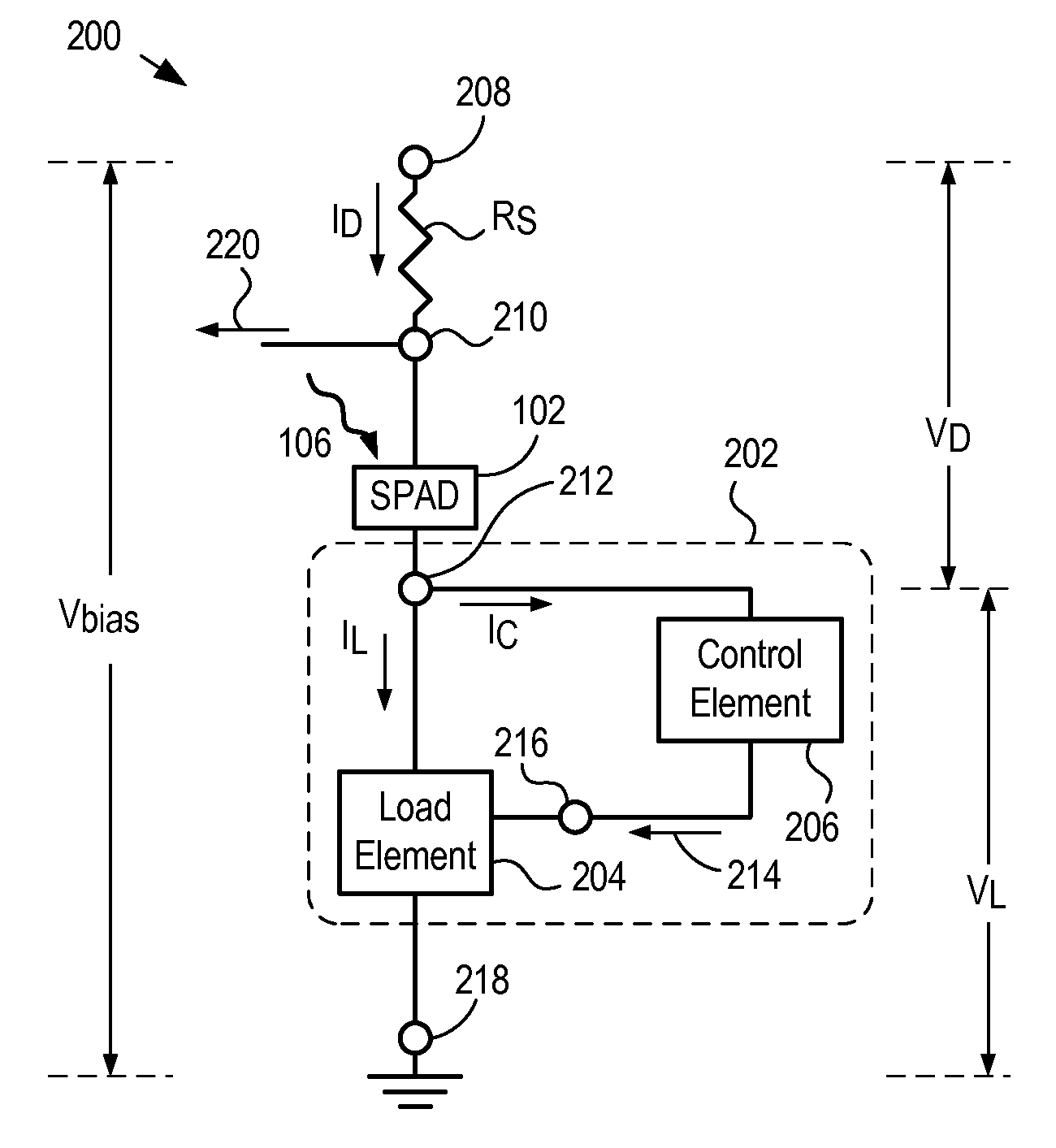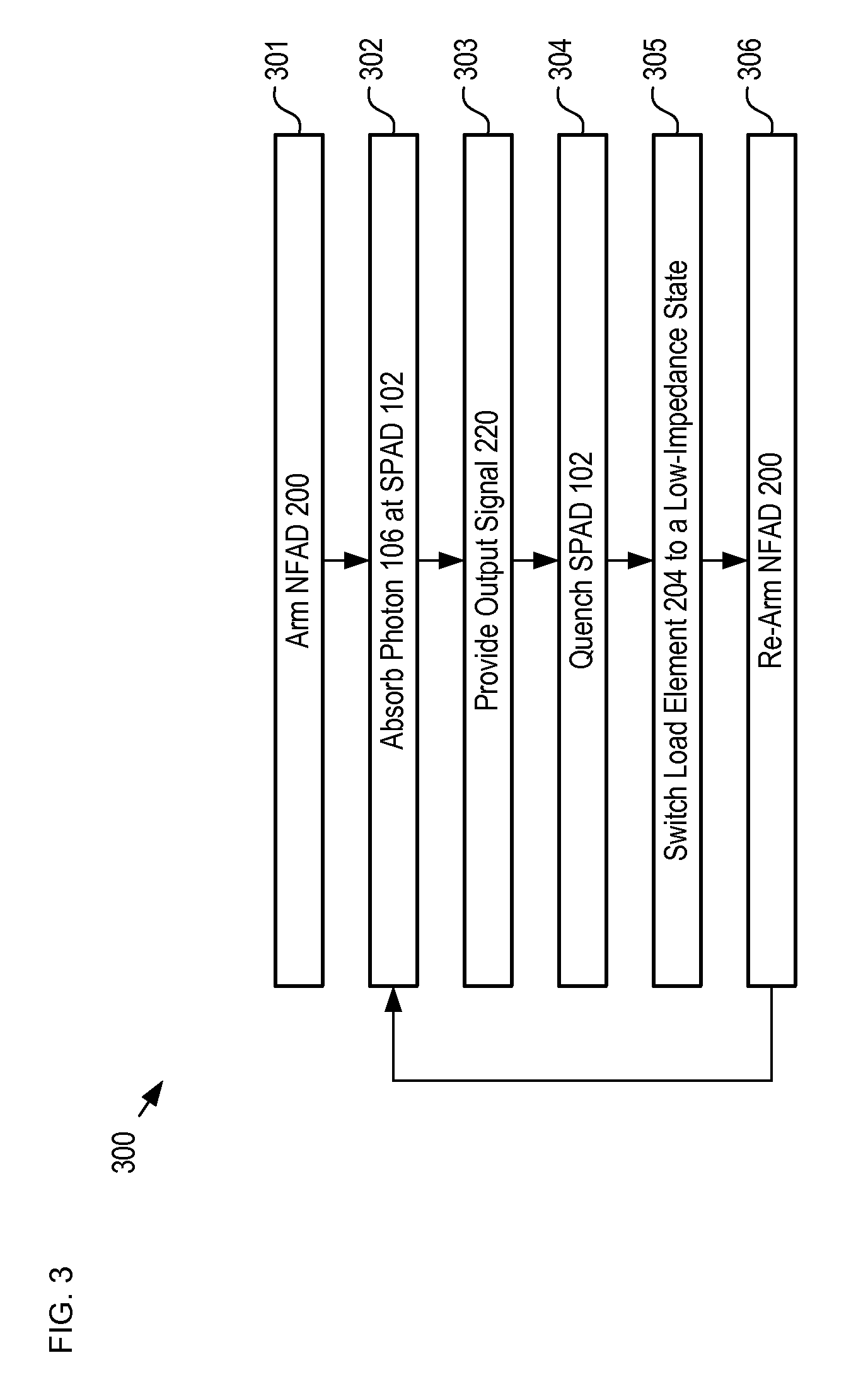Two-state negative feedback avalanche diode having a control element for determining load state
a negative feedback and diode technology, applied in the field of single-photon avalanche photodetectors, can solve the problems of runaway avalanche, easy detection of macroscopic current, and inability to combine high operational speed and wavelength range required for many applications of current spads
- Summary
- Abstract
- Description
- Claims
- Application Information
AI Technical Summary
Benefits of technology
Problems solved by technology
Method used
Image
Examples
Embodiment Construction
[0026]The following terms are defined for use in this Specification, including the appended claims:[0027]Single-photon avalanche diode (SPAD) is defined as an avalanche photodiode structure designed and intended for operation in Geiger mode.[0028]Negative feedback avalanche diode (NFAD) is defined as a SPAD that is operatively coupled with a negative feedback load. Preferably, the negative feedback load and SPAD are monolithically integrated.[0029]Electrically connected is defined as being in direct electrical contact. Two terminals are considered electrically connected if each remains at the same voltage potential for substantially any magnitude of electrical current through them (neglecting any inadvertent voltage drop through a conductive electrical line or trace used to connect the terminals together).
[0030]FIG. 1 depicts a schematic drawing of an NFAD in accordance with the prior art. NFAD 100 comprises SPAD 102 and load 104.
[0031]SPAD 102 is an avalanche photodiode that is dim...
PUM
 Login to View More
Login to View More Abstract
Description
Claims
Application Information
 Login to View More
Login to View More - R&D
- Intellectual Property
- Life Sciences
- Materials
- Tech Scout
- Unparalleled Data Quality
- Higher Quality Content
- 60% Fewer Hallucinations
Browse by: Latest US Patents, China's latest patents, Technical Efficacy Thesaurus, Application Domain, Technology Topic, Popular Technical Reports.
© 2025 PatSnap. All rights reserved.Legal|Privacy policy|Modern Slavery Act Transparency Statement|Sitemap|About US| Contact US: help@patsnap.com



